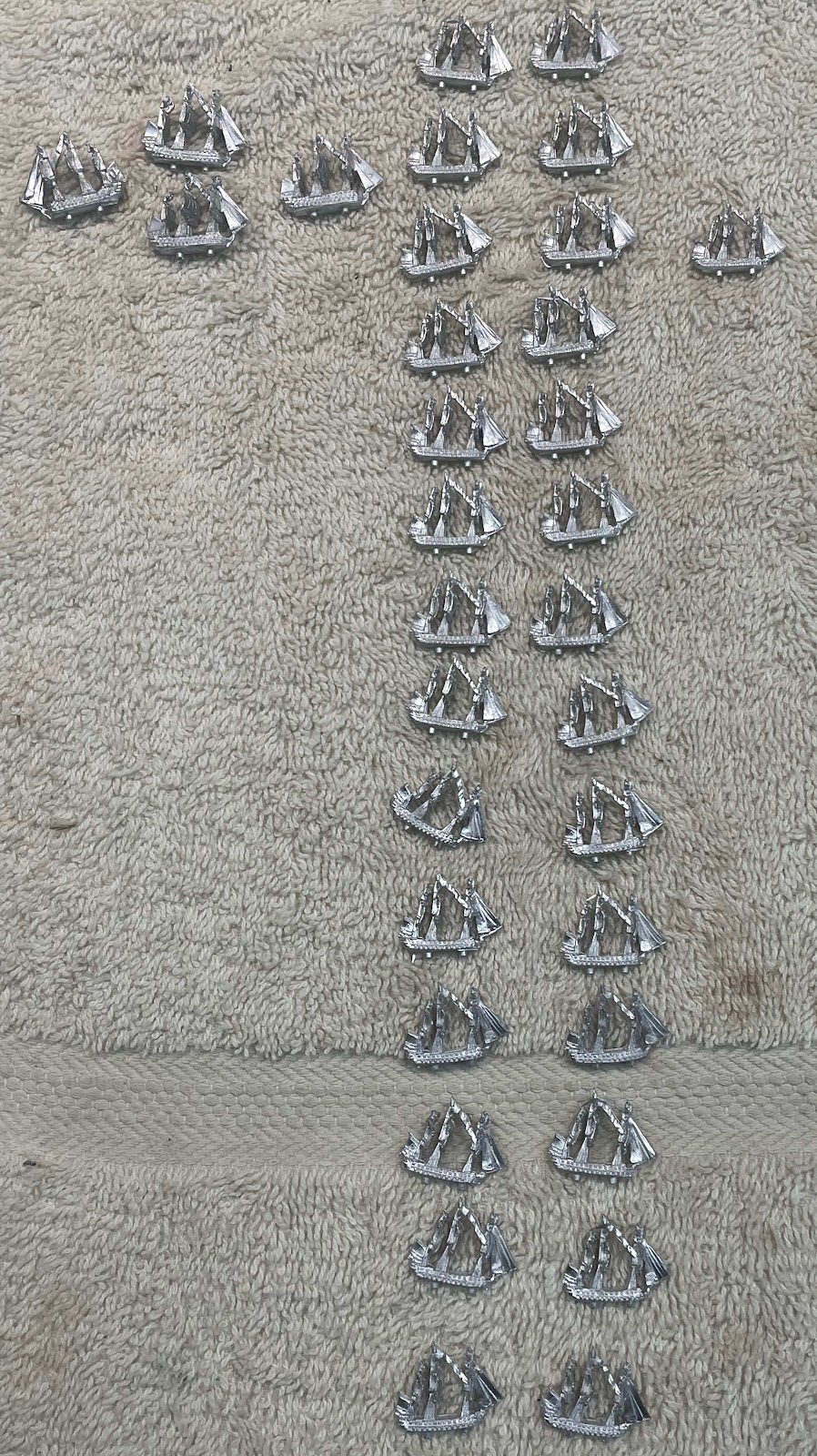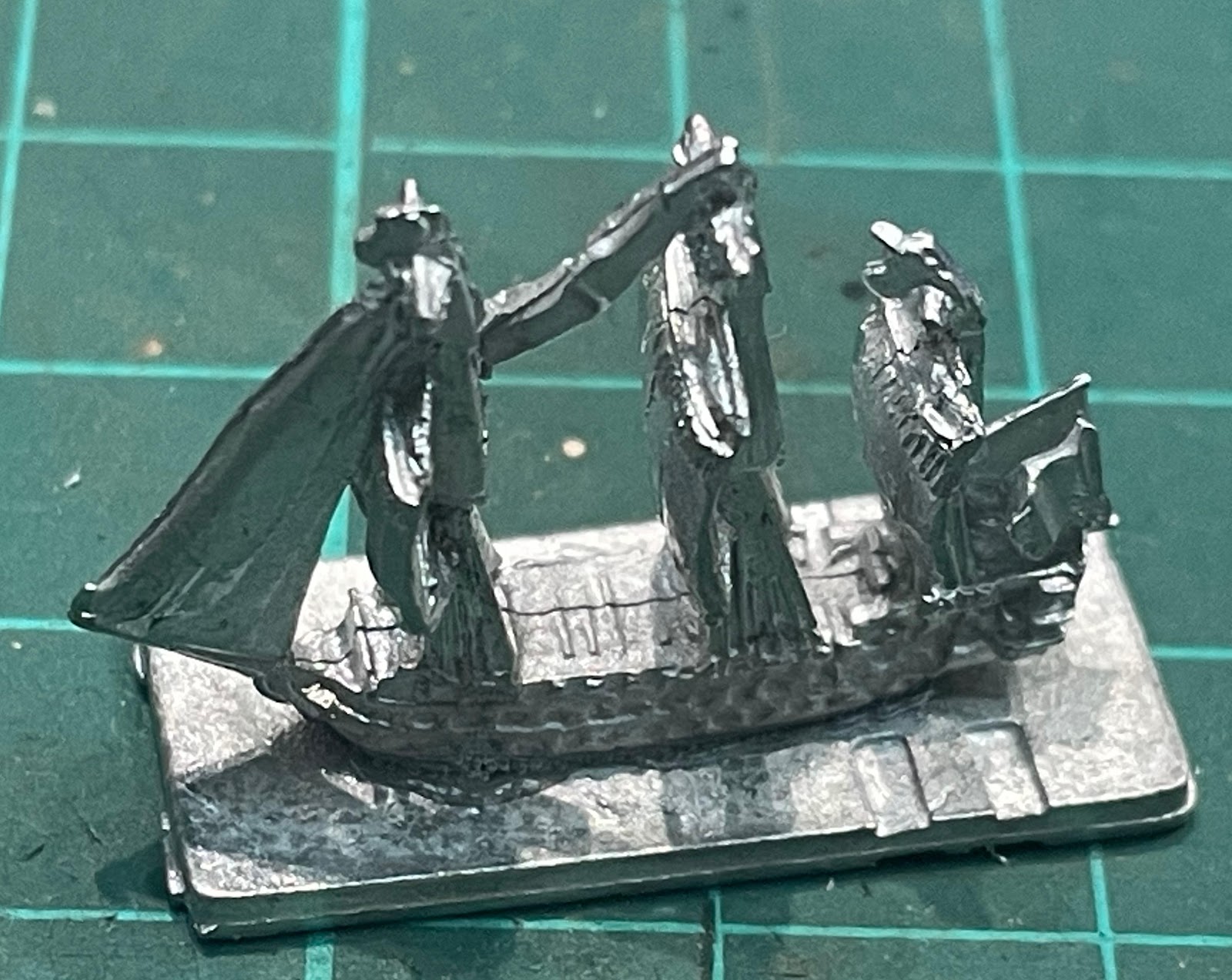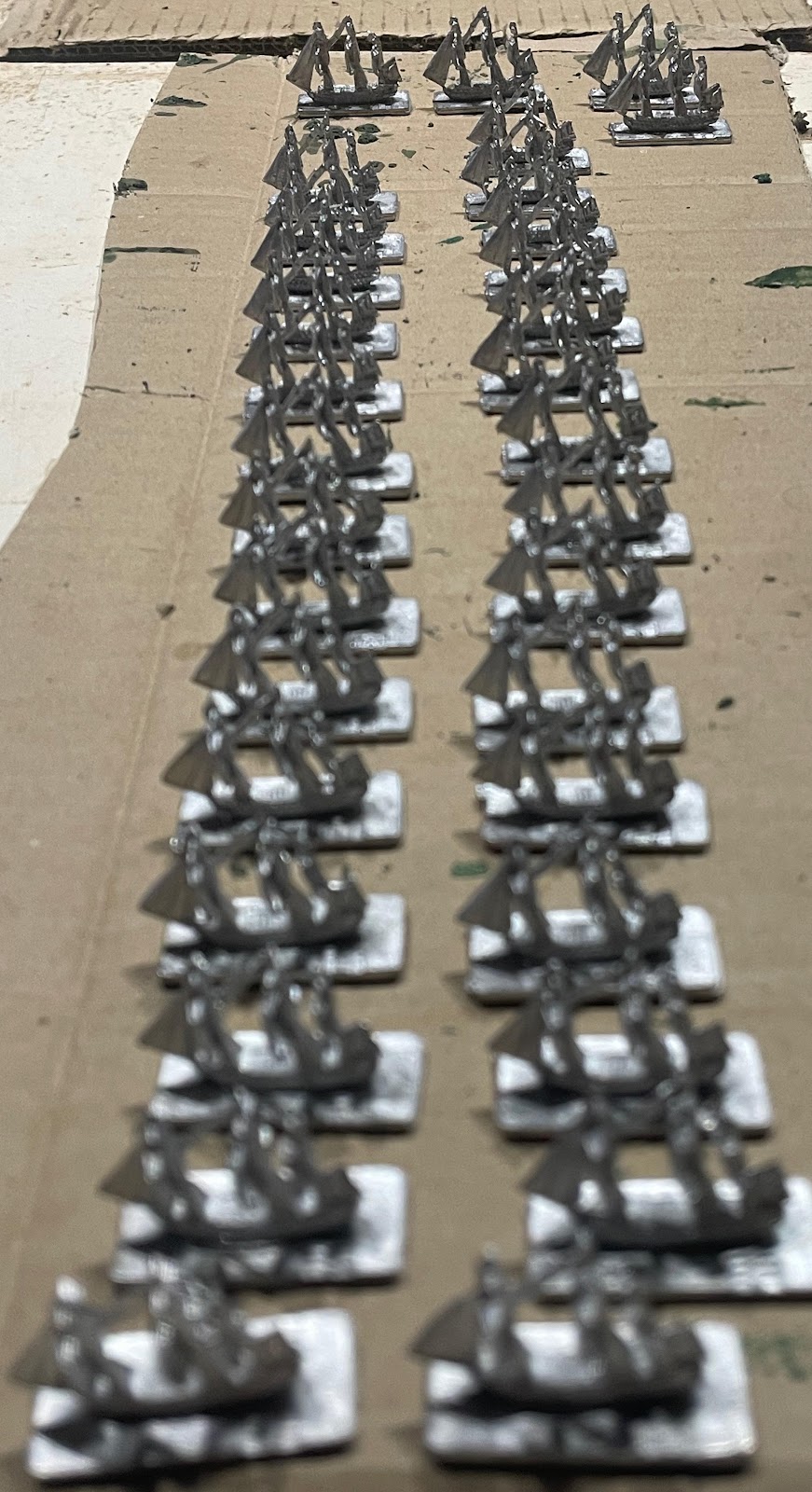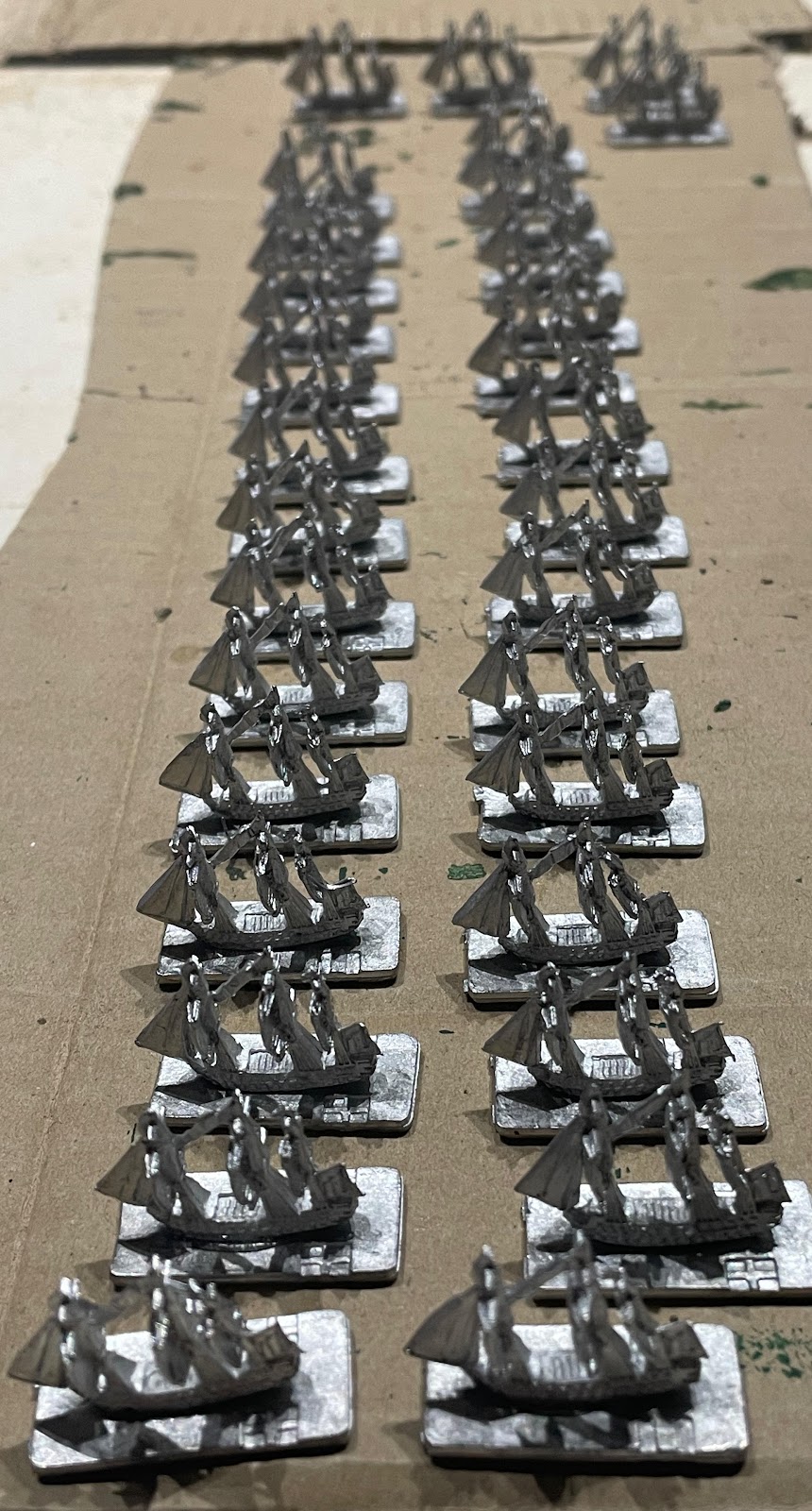Being very much in a 'boating' phase, naval content has dominated my paintertainment recently. I have stumbled on some rippers in the process.
Three DecksNot paintertainment but I want to give a huge plug for the simply marvellous Three Decks website.
Started by CY Harrison, Three Decks is "...the premier web resource for researching naval history during the Age of Sail." It is a marvellous repository of "...detailed information on vessels, crew, shipyards, dockyards, naval actions, geographical locations and much, much more including background details on the ranks, appointments and the nations involved. Even the National Maritime Museum links to us (VERY proud of that one)", as Mr Harrison states on the home page.
The site boasts information about "29,520 ships, 51,940 seamen, 1,073 actions/battles" originally provided Mr Harrison, now assisted by a team of dedicated editors. There is even a shop from which you can purchase "...pre-dreadnought and World War One era warships in 1:4800, 1:3000, 1:2400 and 1:1800 scales" as well as copies of his book "Royal Navy Officers of the Seven Years War" published by Helion. A great way to assist him/them financially. Or you can make a donation.
I have used the website regularly and often over the past few months to find information about the armament and compliment of ships for actions that I want to recreate on the table-top.
I have mentioned it previously and will mention it again. Cannot recommend it highly enough.
Drachinifel Naval HistographerWhile searching around I found the videos by this fellow on yoo-toobe. He has loads and loads and loads of content about ships, actions, people, and matters naval. They are all top quality, well researched and provide heaps of information in an engaging manner, rather than glitz and superficial entertainment. He focusses on 1850–1950, but has a few videos about the age of sail. I watched the one entitled "Ship Types in the Age of Sail - Sloops, Brigs, Frigates and Ships of the Line". He clarifies the names used for different ships of sail, what all of those 'rates' mean, the origins of the names and how they changed over time, becoming firmly established in the Napoleonic period (for the English at least) and applied to the ships of other navies since then.
From there I chiefly watched some of his videos about the Pacific War; the Solomons campaign and Battle of the Coral Sea. This is another period of great interest to me. Top viewing while painting 'tall ships'—it did not matter that it was not related!
The Operations RoomOne of Drachinifel's videos about the Battle of Guadalcanal featured some excellent animation produced by the Operations Room. Not the stupid, arcade-style of large ships zooming around like gunboats that I see in previews of World of Warships, but a video-style presentation of a wargame with ships manoeuvring, the path of in-coming bombers and of defending combat air patrol. Sensational.
I went to that channel and watched the series of videos about the Battle of Leyte Gulf. As with Drachinifel, the focus is on historical accuracy and content, accompanied with their trade-mark, excellent animation, as opposed to Drach's use of stills (predominantly).
The Hunt for HMAS SydneySearches on the internet related to the Pacific War lead me to the footage of the IJN Akagi when it was found in 2019; as was USS Hornet—events that I had managed to miss—and then to that of USS Yorktown. Superb video and incredibly moving. It made me recall the time when HMAS Sydney (II) was found back in 2008 and the excellent doco. that was made at the time. It's not available on yoo-toobe, so I splashed out and bought it (for $14.95!).
It was as good 16 years later as it had been in 2008. Perhaps better.
Of great interest to me, was a bit of history within history. In trying to find the video on-line, I found an earlier one from 1993 "The mysterious loss of HMAS Sydney", which I had watched at the time of its release, but had forgotten about. I watched it again, after "The Hunt for HMAS Sydney". It made for some salutary viewing.
From the moment of Sydney's disappearance, stories, myths and conspiracy theories began. They only multiplied in the years that followed, fuelled by the burning question, "How could the Sydney, 'the lucky ship', pride of the RAN have been sunk by a less well armed and armoured raider?" From government cover-ups to a Japanese submarine through to, perhaps the worst of all, accusations of criminal acts by the crew of the Kormoran. These were included in the 1993 video, presented by advocates of each, convinced that they were correct, juxtaposed with the known facts and contradictions and the testaments of living crew of the Kormoran, in 1941 and 1993. Yet, answers were there none. The mystery was very much alive in '93.
It was amazing how incorrect the various theories and stories were, compared with the facts that came out in '08, revealed by the wreck, supported by the testimonials of the German sailors, who provided the information that was crucial in finding the Kormoran and, from there, the Sydney. Chalk another one up for the 'Ockham's razor'-style of events compared to wild, conspiracy theories!
Two excellent videos tied off the story for me. Both were of presentations to the Naval Historical Society of Australia, about the battle and the scientific detective work that lead to the identification of the unknown sailor (21-year-old Able Seaman Thomas Welsby Clark) in 2021—his remains were found in a carley float drifting off Christmas Island on 6th February 1942, brought ashore and buried quickly ahead of the Japanese occupation of the island.
Play For TodayOn a completely different tack (ha, ha), the paintertainment for the last few days has been c/- a series of plays/tele-movies produced by the BBC from 1970–1984, called "Play For Today".
Julian put me on to them the other day. I dunno whether they were shown on the ABC. I don’t remember it/them.
There is a universality to the stories so that despite being ‘old’ and having some very English bits to them, I reckon that they still work today and for me, in and of this place. They might work a bit better for me because of the ‘englishness’ that I had in my upbringing (being of an emigré family), since I enjoy stories from the past, and since most of them are from my era (or times that well and truly echoed, like the 'Second War'). Being a '65 drop, the 70s and early 80s were my 'formative' years. Additionally there is the lasting value of a good story with excellent writing that is well acted and produced.
I have now watched "The Flipside of Dominick Hide" (the one originally recommended by Julian), "Another Flip for Dominick", "Aliens", "Dear Brutus", "Bavarian Night", "Last Love" and "Love on a Gunboat". Not a ‘dud’ amongst them.
Fantastically, they are all on the amazing Internet Archive.
Trouble is, I am finding them addictive and there are loads of the bloody things!
I watched ’The Lie’ last night. That one was a bit confronting. It was written by Ingmar Bergman and translated by Paul Britten Austin*. The upper-middle class characters have these really awful, soulless and loveless lives and then it turns particularly ugly at the climax/ending. I was shaken up by that one.
*Mention of Paul Britten Austin brings us back to the main purpose of this blog; the Napoleonic period (in its broadest terms). He was the author of the fabulous 1812 eyewitness trilogy of books, published in the early 1990s and then released as a single volume in 2000. I was intrigued that he'd also translated a story written by Ingmar Bergman, so looked him up to see if I could find more it. I did not, but discovered four interesting points: he married Bergman’s sister, was a scholar of Swedish, died in 2005 and there is a really interesting quote in Wikipedia regarding the 1812 books:
What value a citation in Wikipedia?!!


















































